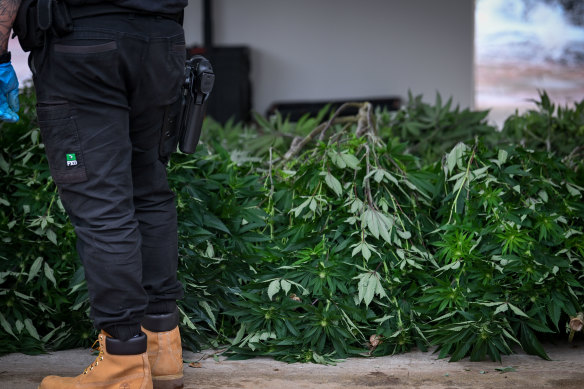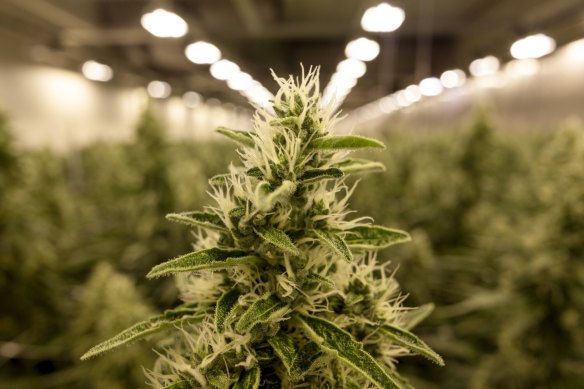By Clay Lucas
Australia’s criminalisation of cannabis possession does little to stop the drug’s availability, enriches crime gangs, and generates thousands of low-level offences among those who can least afford it.
A report released on Wednesday by the Penington Institute has found arrests in the $5-billion-a-year cannabis trade are hitting poor Australians the hardest.
Mapping of where police prosecutions for cannabis possession took place in the past five years shows 18 out of the 20 council areas with the highest per capita cannabis arrests were also the most disadvantaged. These areas had the highest unemployment, the least educational achievement and the lowest income rankings.
At the other end of the spectrum, the five most advantaged council areas had the fewest arrests for cannabis possession.
In 2016, Australia legalised medicinal cannabis, meaning patients can access cannabis products via a prescription.
This includes cannabis with tetrahydrocannabinol (THC) still in it, making it much the same as the product supplied via illegal drug dealers.
It means those with the money and time to obtain a script for cannabis can buy the drug legally. The most common reasons for a GP to prescribe cannabis are anxiety and insomnia.
In the five years to 2024, the Victorian Crime Statistics Agency reported 64,754 cannabis-related offences. About 83 per cent of these offences were for possessing or using cannabis, while another 9 per cent of charges were for low-level cannabis growing – meaning more than 90 per cent of cannabis offences were unrelated to trafficking.
The report finds that Australia’s anti-drug strategy spends about $3.5 billion on law enforcement, but less than $90 million on harm reduction. Policing of cannabis has neither reduced its availability nor its consumption.
An estimate by University of Melbourne economists valued the annual cannabis market in Australia at $5 billion and found that much of this money ended up in the hands of criminal networks.
Penington Institute chief executive John Ryan said organised crime viewed cannabis as a low-risk and steady source of revenue that helped finance higher-margin trafficking of dangerous drugs such as heroin and methamphetamine. “One senior policeman is quoted in the paper as describing cannabis as ‘the jet fuel of organised crime’,” he said.
Ryan said state and federal governments should consider allowing cannabis to be regulated in much the same way as alcohol and tobacco.
The Penington report found that the regulation of a cannabis market in parts of North America had resulted in far fewer people buying from dealers who obtained the drug illegally – meaning fewer arrests.
Ryan said that current cannabis laws in Australia “for the most part simply generate thousands of arrests for low-level cannabis use and possession offences, which disproportionately impacts people in lower socioeconomic regions”.

Penington Institute chief executive John Ryan.
Regulating cannabis was, he said, a “sensible pathway” to managing its use and “reducing the harms being shouldered by those we should be striving to help”.
The proposal from the Penington Institute to regulate the cannabis market for adult use is separate from the policy of medicinal cannabis implemented by state and federal governments.

A police raid on a Taylors Lake “grow house” in 2023. Melbourne University economists estimate Australia’s cannabis market to be worth upwards of $5 billion annually.Credit: Eddie Jim
This system is now in widespread use after its introduction in 2016. About 700,000 Australians use cannabis for medicinal purposes each year, Australian Institute of Health and Welfare figures show.
Before regulated access in 2016, Australians got their cannabis from outlawed suppliers. Doctors this week warned that the use of cannabis for medicinal purposes was leading to a significant increase in people being hospitalised with psychosis.
Victorian opposition mental health spokeswoman Emma Kealy said that opening the doors to a regulated cannabis market, as proposed by the Penington Institute, would push the state’s “mental health crisis to breaking point, and all Victorians would pay the price”.

Flowering cannabis plants at a legal cannabis grow room in Germany, which has become Europe’s largest medicinal cannabis market.Credit: Bloomberg
“Access to drug and alcohol support services is already critically low in Victoria,” Kealy said. “While demand for rehabilitation and counselling keeps increasing in Victoria, services are struggling to meet demand following successive funding cuts.”
A spokeswoman for the Victorian government said there were no plans to legalise cannabis for personal use.
“We’ve been a leader in delivering access to medicinal cannabis for those who need it, and acknowledge the importance of the issue to many members of the community,” she said. “We continue to engage with the community and experts to hear people’s diverse perspectives and experiences.”
Victoria was the first Australian jurisdiction to implement legal access to medicinal cannabis, spurring subsequent Commonwealth policy changes.
The Morning Edition newsletter is our guide to the day’s most important and interesting stories, analysis and insights. Sign up here.